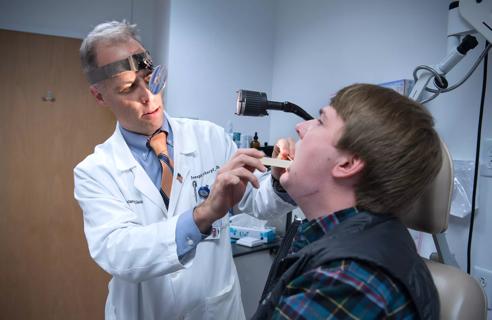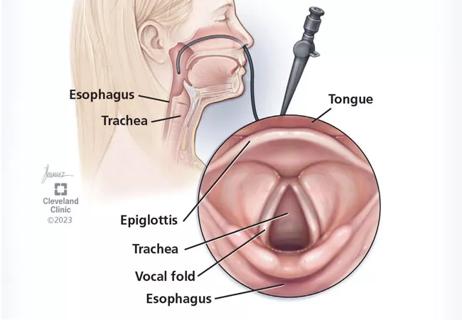New findings have clinical implications for managing dysphagia

In a recently published study, pediatric otolaryngologists at Cleveland Clinic validated prognostic features of silent aspiration in pediatric patients and contributed new insights to the medical management of this population.
Advertisement
Cleveland Clinic is a non-profit academic medical center. Advertising on our site helps support our mission. We do not endorse non-Cleveland Clinic products or services. Policy
Dysphagia in pediatric patients can have a wide range of presentations. Children with severe swallowing dysfunction are more likely to experience acute aspiration and have an increased risk of chronic lung disease, recurrent pneumonia or death. On the other end of the spectrum, mild or silent aspiration, while less pernicious, is also less understood from an etiological perspective.
Brandon Hopkins, MD, Section Head of Pediatric Otolaryngology in Cleveland Clinic’s Head & Neck Institute and senior author of the study, notes that silent aspiration poses a clinical threat because it often goes unnoticed. “Unlike overt aspiration where the body recognizes food going down into the airway and makes an effort to clear it, for a patient who silently aspirates, this feature is often absent,” he says. The long-term effect of this abnormality is unknown.
After treating several patients referred to him for unrelated symptoms, Dr. Hopkins noticed a pattern. Some patients, who had received a barium swallow study in the last year or two, had no documented intervention. “‘Did they receive a subsequent swallow study? How was the decision made to advance their diet? Was a speech-language pathologist involved or was it another ENT?’ These are just a few of the questions we would like to know, but sometimes continuity of care is disrupted if outcomes improve naturally or the patient moves out of the healthcare system,” he says. “The progression of this condition is central to our study question, ‘who is the silent aspiration population and what happens to them over time?’”
Advertisement
The retrospective study, published in July 2019 in the International Journal of Pediatric Otorhinolaryngology, showed that the cohort of patients who silently aspirated (n=25) were more likely than the normal modified barium swallow study cohort (n=31) to have neurological comorbidities (64.0% vs. 9.7%, p < 0.001). This group was particularly more likely to have cerebral palsy and/or a seizure disorder. This finding was not surprising to the authors, and was consistent with some prior literature, validating neurological conditions as a comorbidity of silent aspiration.
The results also showed a relatively high rate of natural resolution among this patient population over time. In fact, by age five, 13 patients (65%) in the study no longer showed abnormalities, five patients (25%) continued to experience symptoms and two (10%) did not have sufficient follow-up to determine outcomes.
These findings raise an interesting point about the longer-term management of these patients. Dr. Hopkins notes that while careful monitoring and repeat assessments should be determined based on the individual patient, in many cases, silent aspiration may improve naturally. “For this patient population, there is often an elevated focus on feeding in their early life, and sometimes – just over time – these abnormalities disappear. In this case, we don’t need to repeat swallowing studies for a definitive diagnosis.” While there are limited risks associated with swallow exams, reducing unnecessary exposure is certainly a goal to improve patient care and quality of life.
Advertisement
Dr. Hopkins plans to continue investigating pediatric dysphagia, although he will focus next on the long-term effects of swallowing in pediatric patients with vocal cord paresis or paralysis. “Aside from feeding changes, silent aspirators do not require aggressive treatment from otolaryngologists,” he says. “We would like to apply a similar investigative framework to a population that does (require aggressive intervention) to understand how surgical intervention might improve an unmet clinical need.”
Advertisement
Advertisement

New system brings much-needed clarity and guidance for moderate to advanced-stage disease classifications

Prompt, multidisciplinary care helps navigate the complexities of a rare condition

Looking at short-term outcomes in a high-risk population

Recommendations look to change mindset with CI referrals

Research aims to better understand the tumor immune micorenvironment

Research could help direct care pathways for patients with unexplained swallowing difficulties

Strong communication with the patient and a thorough approach are essential

Cleveland Clinic physicians weigh in